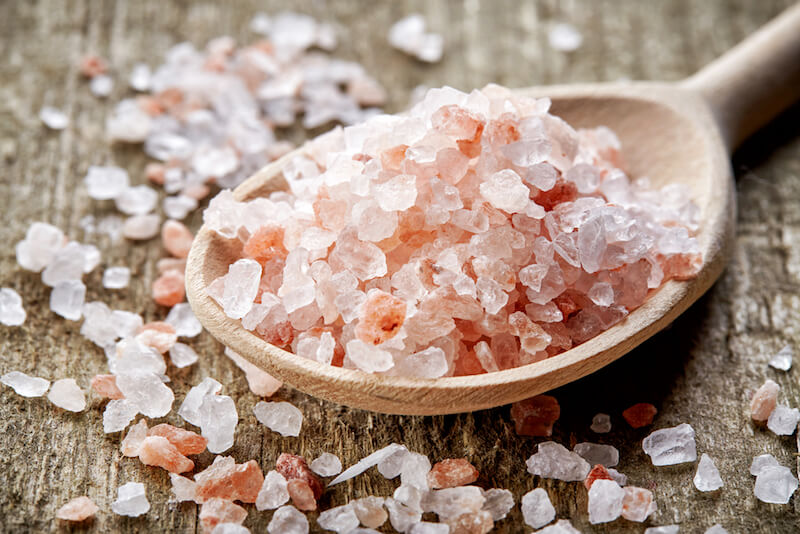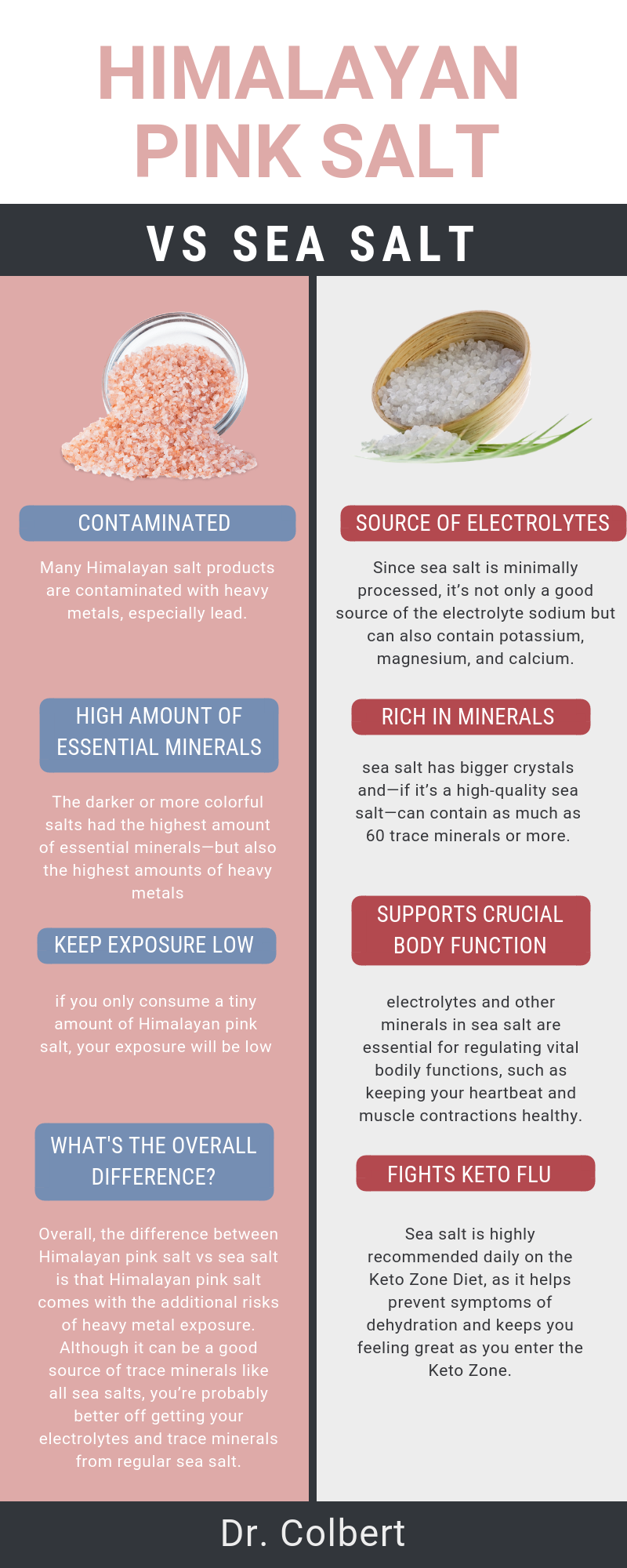Salt is a necessary food your body needs to function properly.
However, the type of salt you use matters. And there’s often a lot of confusion when it comes to the healthiest sea salt, especially in regards to Himalayan pink salt vs sea salt. If you’ve been using Himalayan pink salt regularly or thinking that all sea salts are created equal, the facts below will probably surprise you.
SEA SALT: GOOD SOURCE OF ELECTROLYTES AND TRACE MINERALS
First, what is sea salt exactly?
Sea salt is made from evaporated water taken from oceans and saltwater lakes (versus table salt, which is mined from salt deposits underground). Sea salt production dates back to prehistoric times, and humans have used it in many ways over the years for cooking, seasoning, and even in non-food products like cosmetics.
Some of the top sea salt benefits include:
- Rich in minerals: Compared with normal salt, sea salt has bigger crystals and—if it’s a high-quality sea salt—can contain as much as 60 trace minerals or more. In our overly-processed world today, it’s harder to get these essential minerals from our soil and foods, so a good sea salt can provide your body with more.
- Great source of electrolytes: Since sea salt is minimally processed, it’s not only a good source of the electrolyte sodium but can also contain potassium, magnesium, and calcium.
- Supports crucial body functions: The electrolytes and other minerals in sea salt are essential for regulating vital bodily functions, such as keeping your heartbeat and muscle contractions healthy.
- Fights keto flu: Sea salt is highly recommended daily on the Keto Zone Diet, as it helps prevent symptoms of dehydration and keeps you feeling great as you enter the Keto Zone.
Celtic and Real Brand sea salt are some of the best sea salt brand choices.
Now, let’s address Himalayan pink salt vs sea salt.
Himalayan pink salt is actually a type of sea salt, but there are reasons it should give you pause. Here’s why.
HIMALAYAN PINK SALT: PRETTY COLOR, RISKY INGREDIENTS
Himalayan pink salts have a gorgeous pink color that many love. Unfortunately, many Himalayan salt products are contaminated with heavy metals, especially lead.
A chemical analysis done by SPEX CertiPrep in 2012 that looked at 12 different sea salts found this: The darker or more colorful salts (like Himalayan pink salt) had the highest amount of essential minerals—but also the highest amounts of heavy metals [1].
Of course, if you only consume a tiny amount of Himalayan pink salt, your exposure will be low. But since there are other sea salt alternatives, why not stick with those and avoid the risk altogether?
Ultimately, it’s probably best to skip Himalayan pink salt altogether or at least make sure you’re buying from a trusted brand.
BUT WHAT ABOUT IODINE IN SALT?
The only thing you’re missing when you use sea salt over regular table salt is iodine. Table salt is supplemented with iodine, while sea salt is not.
Iodine is certainly crucial for your health, and iodized salt is one way to get here. However, eating whole food sources of iodine is preferable. Good sources include:
Plus, iodized salt is more processed and does not include the additional trace minerals that sea salt provides.
So overall, the difference between Himalayan pink salt vs sea salt is that Himalayan pink salt comes with the additional risks of heavy metal exposure. Although it can be a good source of trace minerals like all sea salts, you’re probably better off getting your electrolytes and trace minerals from regular sea salt.


I wondering about Kosher salt. Is it good for you. Thank you for your reply.
Sincerely, Jackie Scefo
What is a trusted source for Himalayan pink salt?